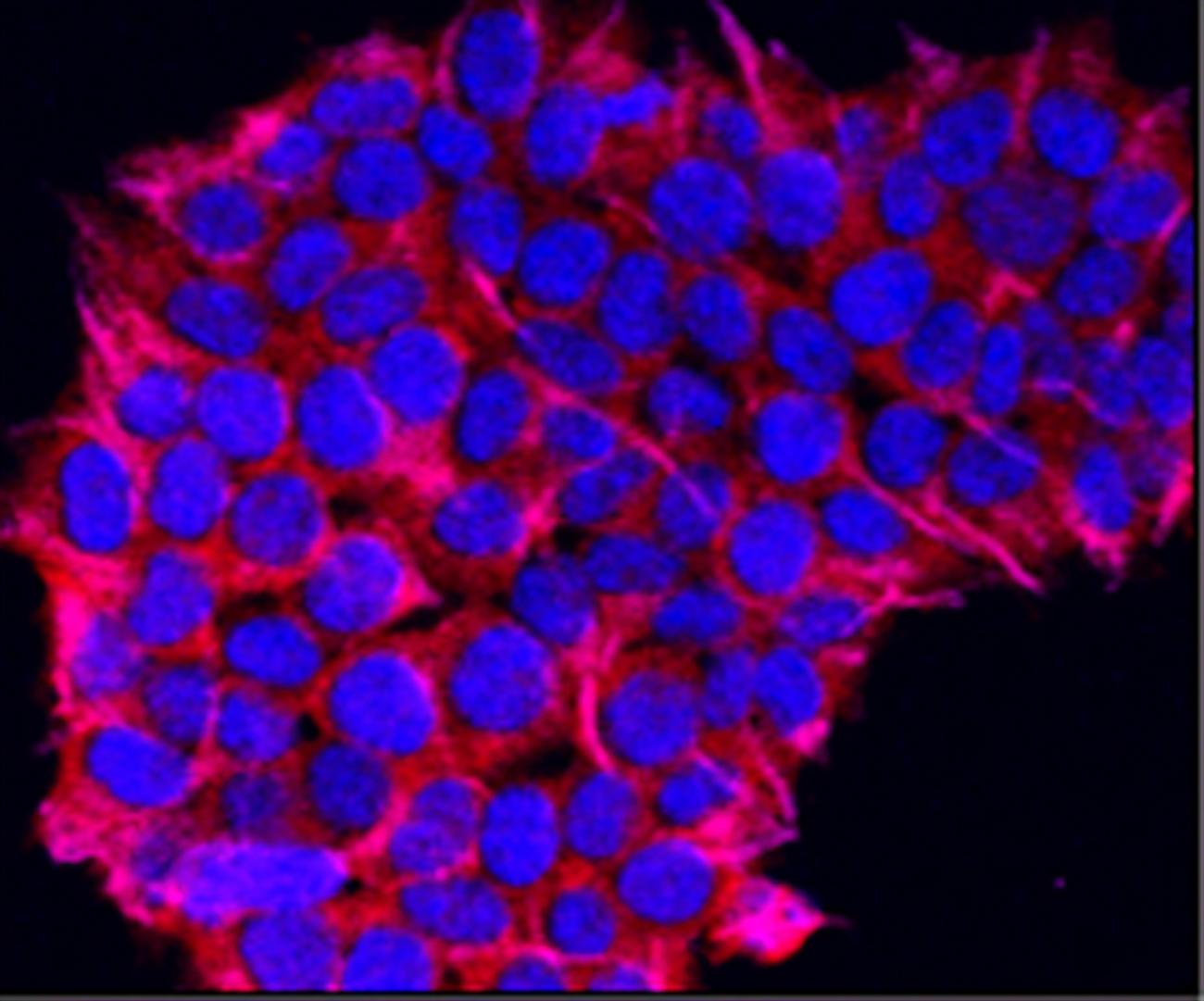Looking at the intricate process of DNA replication, one cannot help but be captivated by the fascinating role of translation within it. With a background in molecular biology and genetics, I have delved deep into this subject, conducting extensive research and leveraging my Ph.D. to gain an in-depth understanding. As a seasoned science writer, I have honed my skills in translating complex scientific concepts into accessible language, allowing me to effectively communicate the intriguing facts surrounding translation during DNA replication to an audience of varied backgrounds.

Interesting Facts About Translation During DNA Replication
DNA replication is an intricate process that ensures the accurate duplication of genetic material within a cell. One crucial aspect of replication is translation, which is responsible for protein synthesis using the genetic instructions stored in DNA. As we delve deeper into the fascinating world of translation during DNA replication, we uncover some intriguing facts that shed light on this complex biological process.
Fact 1: The Molecular Players
Several key components come together to facilitate DNA translation. These players include mRNA, tRNA, ribosomes, and aminoacyl tRNA synthetases. mRNA acts as a messenger that carries the genetic code from DNA to the ribosome. tRNA molecules bring in the amino acids required to build the protein, while ribosomes serve as the machinery for protein synthesis. Aminoacyl tRNA synthetases are enzymes responsible for linking specific amino acids to their corresponding tRNA molecules. Together, these players orchestrate the intricate dance of translation.
Fact 2: The Three Steps of Translation
Translation during DNA replication can be divided into three major steps: initiation, elongation, and termination. Initiation marks the beginning of the process, with the ribosome assembling on the mRNA and finding the start codon. Elongation involves the sequential addition of amino acids to the growing protein chain, guided by the mRNA template and the complementary anticodon sequences of tRNA molecules. Finally, termination signals the end of translation, with the ribosome reaching the stop codon and releasing the completed protein.
“From initiation to termination, translation during DNA replication is a step-wise journey that brings proteins to life.”
Fact 3: More Complexity Than Meets the Eye
Once considered a straightforward process, translation during DNA replication has revealed itself to be more complex than previously thought. Recent research has uncovered intricate mechanisms that fine-tune translation efficiency and accuracy. Scientists have discovered regulatory elements within mRNA sequences that can affect the speed and fidelity of protein synthesis. Additionally, the interplay between ribosomes and tRNA molecules has proven to be more dynamic and nuanced than initially imagined. It is through these discoveries that we gain a deeper appreciation of the intricacy hidden within the translation process.
Fact 4: DNA Replication and Protein Synthesis – Two Sides of the Same Coin
While DNA translation and DNA replication may seem like separate processes, they are inherently interconnected. DNA replication ensures the faithful duplication of the genetic material, creating identical copies of the DNA molecule. On the other hand, DNA translation brings the genetic code to life, guiding the synthesis of proteins that carry out essential cellular functions. Together, these processes work hand in hand, highlighting the interdependence and harmony within the intricate dance of life.
Fact 5: Semiconservative DNA Replication
DNA replication follows a semiconservative model, wherein each strand of the double helix acts as a template for the synthesis of a new, complementary strand. This means that after replication, each new DNA molecule consists of one parent strand and one newly synthesized strand. The semiconservative nature of DNA replication ensures the preservation of genetic information across generations, passing down traits and characteristics from parent to offspring in a remarkably accurate manner.
“Semiconservative DNA replication safeguards the blueprint of life, ensuring its faithful transmission from one generation to the next.”
Fact 6: The Central Dogma in Action
DNA replication and translation are integral processes that follow the principles of the central dogma in molecular biology. According to this dogma, DNA serves as the blueprint for life, which is transcribed into RNA during DNA replication. The RNA then serves as a template for translation, where proteins are synthesized. This fundamental principle underlies the flow of genetic information within cells, allowing the blueprint of life to be transformed into functional molecules with vital biological roles.
In Conclusion
Translation during DNA replication holds a mesmerizing complexity that continues to captivate scientists and researchers alike. From the interplay of molecular players to the interconnectedness of DNA replication and protein synthesis, each aspect brings us closer to unraveling the intricate web of life’s molecular dance. As we uncover more fascinating facts about translation during DNA replication, we gain a deeper understanding of the processes that shape and sustain life itself.
Translation is a fascinating field that holds countless secrets waiting to be discovered. Have you ever wondered about the intricate nuances involved in the translation process? Or perhaps you’re curious about the impact of translation on global communication? Uncover these compelling facts about translation by clicking here: facts about translation. Prepare to be amazed as you dive into the captivating world of language transformation and cultural exchange. Don’t miss out on this opportunity to expand your knowledge and broaden your horizons. Start your journey now!
DNA Replication: The Process of Creating More DNA
[youtube v=”Qqe4thU-os8″]
Introduction
DNA replication is a fundamental process that allows cells to duplicate their genetic material accurately. It is a complex and highly regulated process that ensures the faithful transmission of genetic information from one generation of cells to the next.
Understanding DNA Replication
DNA replication occurs in both eukaryotic and prokaryotic cells, although with some differences. In eukaryotic cells, DNA replication takes place in the nucleus, specifically during interphase before cell division. The replication process ensures that the newly formed daughter cells receive a complete copy of the DNA from the mother cell.
The Key Players in DNA Replication
Several enzymes play crucial roles in DNA replication. These enzymes include:
Helicase: This enzyme untwists the two single strands of DNA by breaking the hydrogen bonds between the nucleobases. It is responsible for unwinding the DNA molecule, preparing it for replication.
DNA Polymerase: This enzyme synthesizes new strands of DNA by using one of the original strands as a template. It adds new nucleotides to the growing strand in a 5′ to 3′ direction.
Primase: Primase marks the starting point for DNA synthesis, providing the initiation codon signal for DNA polymerase.
Ligase: This enzyme acts as a “super glue” that joins the fragments of the newly synthesized DNA strand together.
The Process of DNA Replication
DNA replication begins at a specific point known as the origin, which is marked by a particular DNA sequence. Helicase unwinds the DNA molecule, and single-strand binding proteins keep the strands apart to prevent them from reannealing. Topoisomerase prevents the DNA from becoming excessively twisted during the unwinding process.
Primase then inserts RNA primers into the single strands to provide the initiation signal for DNA polymerase. DNA polymerase synthesizes new strands in a 5′ to 3′ direction, using the existing strands as templates. One of the strands, known as the leading strand, is synthesized continuously, while the other, known as the lagging strand, is synthesized in short fragments called Okazaki segments.
Finally, ligase joins the Okazaki fragments together, resulting in two identical double-helix DNA molecules from one original molecule. This process is called semi-conservative replication because each of the two newly synthesized DNA molecules contains one original strand and one newly synthesized strand.
The Significance of DNA Replication
DNA replication is a highly regulated process that ensures the accurate transmission of genetic information. Mistakes during replication can lead to errors in the genetic code, potentially resulting in incorrect proteins or no protein production at all. However, DNA polymerase has the ability to read and edit the genetic code, minimizing the occurrence of errors.
Conclusion
Understanding DNA replication is crucial for unraveling the complexities of genetic inheritance and the functioning of living organisms. This process, which involves various enzymes and precise coordination, plays a fundamental role in ensuring the stability and continuity of life. From the simple act of cell division to the development of life-saving treatments, DNA replication continues to be a subject of fascination and ongoing research.
“DNA replication is not just a simple copying process; it is a highly regulated and intricate mechanism that safeguards the integrity of genetic information.”

FAQ
Question 1
What are the key components required for DNA translation during replication?
Answer 1
The key components required for DNA translation during replication are mRNA, tRNA, ribosomes, and aminoacyl tRNA synthetases.
Question 2
What are the major steps involved in DNA translation during replication?
Answer 2
The major steps in DNA translation during replication are initiation, elongation, and termination.
Question 3
What is the role of ribosomes in DNA translation during replication?
Answer 3
Ribosomes facilitate mRNA translation during DNA replication by inducing the binding of complementary tRNA anticodon sequences to the mRNA.
Question 4
How does DNA translation during replication differ from DNA replication itself?
Answer 4
DNA translation during replication is the process of protein synthesis using the genetic information stored in DNA, while DNA replication is the process of duplicating the DNA itself to ensure each cell receives a complete set of genetic material.
Question 5
Why is DNA translation during replication considered more complex than previously thought?
Answer 5
DNA translation during replication is considered more complex than previously thought due to ongoing research revealing new insights into the intricacies of the process.
- China II Review: Delicious Food & Speedy Service - April 17, 2025
- Understand Virginia’s Flag: History & Debate - April 17, 2025
- Explore Long Island’s Map: Unique Regions & Insights - April 17, 2025
















